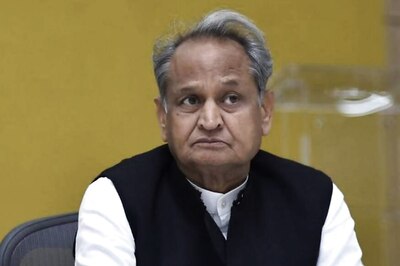
views
The whole UPI experience is set to transform in 2024 with the government planning a slew of new measures to make transactions more convenient. In the calendar year of 2023, UPI achieved a significant milestone by exceeding 100 billion transactions, reaching approximately 118 billion, as per data released by the National Payments Corporation of India (NPCI). This signifies a remarkable 60 per cent surge when compared to the 74 billion UPI transactions recorded in 2022.
The Unified Payments Interface (UPI) platform has registered overwhelming success over the years and is breaking all records known to India. Prime Minister Narendra Modi’s push to go cashless has been, in hindsight, one of the most strategic and impactful measures of his term, bringing about a sea change in the financial landscape of India. This has been possible with a milieu of measures that prioritised digital infrastructure, financial inclusion and internet connectivity leading to a revolution in how Indians transact, enabling a growing customer base. The government now aims to safeguard user experience and unleash UPI’s potential on a global scale.
Upgrading the UPI Experience
In light of the unprecedented public acceptance of UPI, the Reserve Bank of India (RBI) and the National Payments Corporation of India (NPCI) have formulated new rules to make it safer and even more convenient, enabling the growth of a more robust user base. Many of these new rules for UPI payments have come into effect from January 1.
These include deactivating inactive IDs, reducing financial frauds with a four-hour window open for reversal of transactions with a new user, an increased transaction limit from Rs 1 lakh to 5 lakh in hospitals and educational institutes, and UPI ATMs— allowing for cash withdrawals through UPI apps— doing away with the need for debit cards.
Combatting financial fraud is at the forefront of the latest UPI upgrade. The deactivation of inactive IDs is intended to prevent misuse and piling up of dormant user accounts. “The decision has been taken to prevent the inadvertent transfer of money to unintended recipients in case customers change their mobile number without disassociating their old number from the banking system,” said the NPCI explaining the decision.
The RBI has called for the provision of a four-hour window, allowing for the reversal of transactions for four hours from the point of transactions above Rs 2000, which could be another promising step towards securing the UPI user from financial fraud.
Further adding ease to the growing appetite of UPI users, the increased transaction limit from Rs 1 lakh to 5 lakh in sectors like hospitals and educational institutes will further make life easier. During the bi-monthly Monetary Policy Committee (MPC) announcement, RBI Governor Shaktikanta Das declared an increase in the transaction limit aiming to boost the adoption of UPI for online payments. The transaction limit for UPI Lite wallets has also been raised from Rs 200 to Rs 500. These transactions are accessible to individuals without an internet connection. Nevertheless, the maximum online transfer amount remains capped at Rs 2,000.
Furthermore, the rollout and expansion of UPI ATMs in the nation, which have already been initiated, will strengthen the connection of Indians with UPI. NPCI and Hitachi Payment Services have partnered to allow cash withdrawals through QR code scanning. This will enable customers to withdraw cash from various accounts without the necessity of carrying debit cards. This will attract even more users by accommodating their requirement for cash with a daily withdrawal limit of Rs 10,000.
These new rules are in keeping with the fast-changing dynamics of India’s burgeoning digital payments landscape and ensuring seamless and robust growth, with safe and untainted fintech infrastructure.
Unleashing UPI’s Global Potential
Upon their arrival in New Delhi, delegates from the Group of 20 (G20) nations experienced a sample of one of India’s most successful innovations: the Unified Payments Interface. Travellers had the option to make a single payment in their native currency to fund a digital wallet, usable throughout their stay to transact with merchants in rupees via the widespread UPI QR codes. This represents just one of the diverse ways in which UPI has expanded its global presence in recent years, with the system already being available in some capacity in over 20 countries.
As a dominant digital payment platform in India, UPI is driving India’s rise as the ‘number one’ in digital payments surpassing even China and the US. Therefore, it does not come as a surprise that UPI is becoming a global favourite with a volume of transactions worth $1.7 trillion in the 2022-23 fiscal year.
The UPI revolution has found global admirers, with the UAE, France, Singapore, Bhutan, Nepal and Sri Lanka opening up to the payment system and allowing its use in varying shapes and forms. Discussions and partnerships are in progress to bring UPI to several other nations, such as Oman, Saudi Arabia, Australia, and the United Kingdom. The outlook for UPI appears promising, holding the potential to transform digital payments globally.
PM Modi also pitched for UPI’s expansion into the BRICS grouping, which now has six new member states. “UPI is used at all levels from street vendors to large shopping malls. Today, among all countries in the world, India is the country with the highest digital transactions,” he had said at the BRICS summit in South Africa last year.
The expanding global foothold of UPI is good news for Indian travellers who are habituated to the convenience of UPI and often find difficulties in making payments abroad. It is also an enabler for greater remittances. As one of the world’s leading recipients of remittances, totalling $125 billion in 2023—considerably surpassing China and Mexico ranked second and third respectively—India has adopted a strategy since 2020 to internationalise UPI. This aims to lower the expenses associated with cross-border transactions.
The Rise of Indian Fintech
The growing global impact of UPI suggests optimistic prospects for the Indian fintech sector. In 2023, India ranked third globally in terms of fintech startup funding even as funding slowed down across sectors. While in 2023, funding slumped to $2 billion in Indian fintech startups, in 2022, this sector secured a significant funding amount of $5.2 billion and is anticipated to transform into a $2 trillion industry by 2030.
Third-party apps, such as leading fintech platforms like Google Pay, Paytm, and Walmart-owned PhonePe, have been allowed to use UPI functionality. For instance, in Google Pay, users can initiate transactions within minutes by adding a UPI-enabled bank account and completing the necessary verification process. Their vast customer acquisition tactics ensured widespread acceptance of the technology. Currently, Google and PhonePe hold about 80 per cent of the market share. However, the government seeks to diversify the shares of UPI services and seeks to limit the share of big tech players in the market to 30 per cent by December 31, 2024. This regulatory measure is poised to further enhance opportunities for the Indian fintech sector.
The seamless interface of UPI, coupled with its colossal rise and projected fortunes, depicts India’s strides in digital and financial inclusion and opens up a wide range of opportunities for the Indian economy in this sector. UPI boosts consumer spending, propelling economic growth further, as technical and physical restrictions to trade are eliminated with just one touch on a smartphone. With India leading the way with a revolutionary, state-of-the-art payments system such as UPI, the country’s prowess in finance and digitisation is evident. UPI is a manifestation of the future of India’s economy which is poised to not just grow to monumental levels but also own an indigenously-built, globally used payment platform in the process.
Views expressed in the above piece are personal and solely that of the author. They do not necessarily reflect News18’s views.




















Comments
0 comment